DNA barcode revealed that wintering birds in Myanmar come from wide range of Palearctic region including Japan.
Although many migratory birds migrate north-south along meridians, they have also been known to avoid geographic barriers such as oceans and deserts (Irwin & Irwin 2005). In north of Myanmar, there are geographic barriers of the Gobi Desert, the Tibetan Plateau, and the Himalayan Mountains which are avoided by migratory birds breeding in the northern part of the Asian continent. Typically, migratory birds breeding from Eastern Europe to northern Central Asia, such as the Blyth's Reed Warbler, migrate through the western side of the barriers, and those breeding from northern Central Asia to northern East Asia, such as the Siberian Ruby Throat, migrate through the eastern side of the barriers. DNA barcoding is a method for species identification, but it can also be useful for identifying population differences for some species. Therefore, we captured birds wintering in Myanmar with a mist net, collected blood samples, and sequenced the DNA barcode region in order to investigate which breeding site they come from.
A total of 144 birds of 52 species, including 25 migratory birds of 10 species, were captured and collected blood during four field trips between November and February 2018-2020. Taxonomically important species were stuffed and stocked as voucher specimens, and their barcode DNA sequences were registered in the DNA database called the BOLD systems. We also compared the sequences to those of breeding sites registered in the BOLD systems. This study resulted in the first Myanmar records of the Sakhalin Leaf Warbler and the Japanese Thrush. These two species were 100% identical to the Japanese breeding population in the DNA barcode sequences, strongly suggesting that they came from Japan. The comparison of nine wintering bird species, excluding the Buff-barred Warbler whose breeding populations have not been registered in the BOLD system, showed that land birds wintering in Myanmar come from a much wider breeding range of the Palearctic region than previously thought, from Northern Europe to Japan.
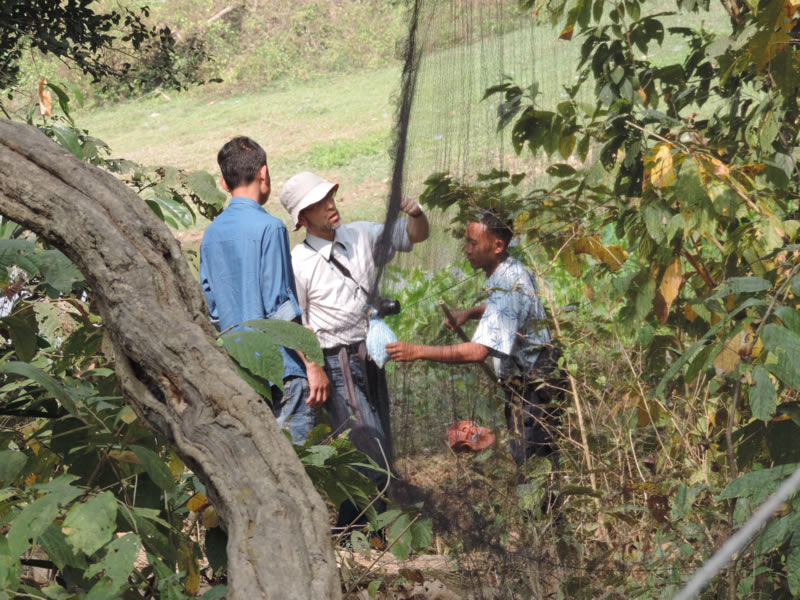
Setting a mist net for catching birds.
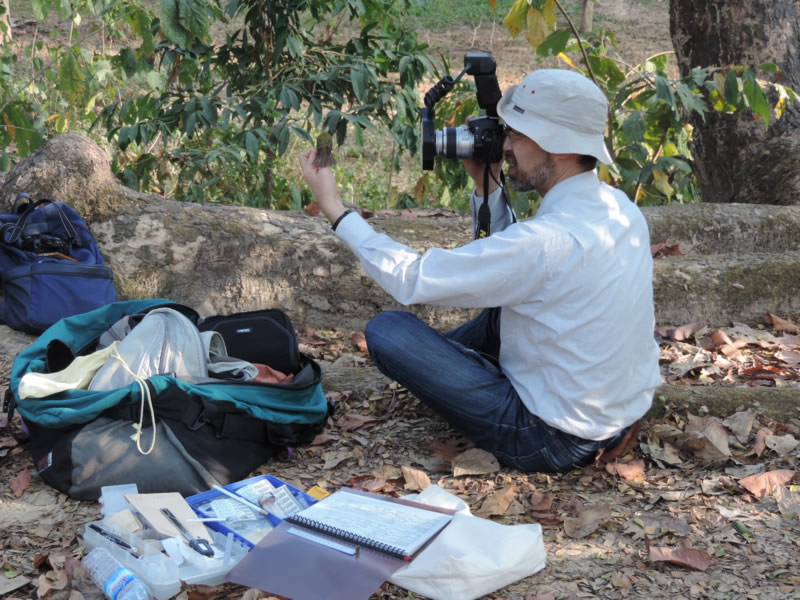
Taking photos and measurements of a caught bird.

We made skin specimens for study of some important species on taxonomy.
Survey
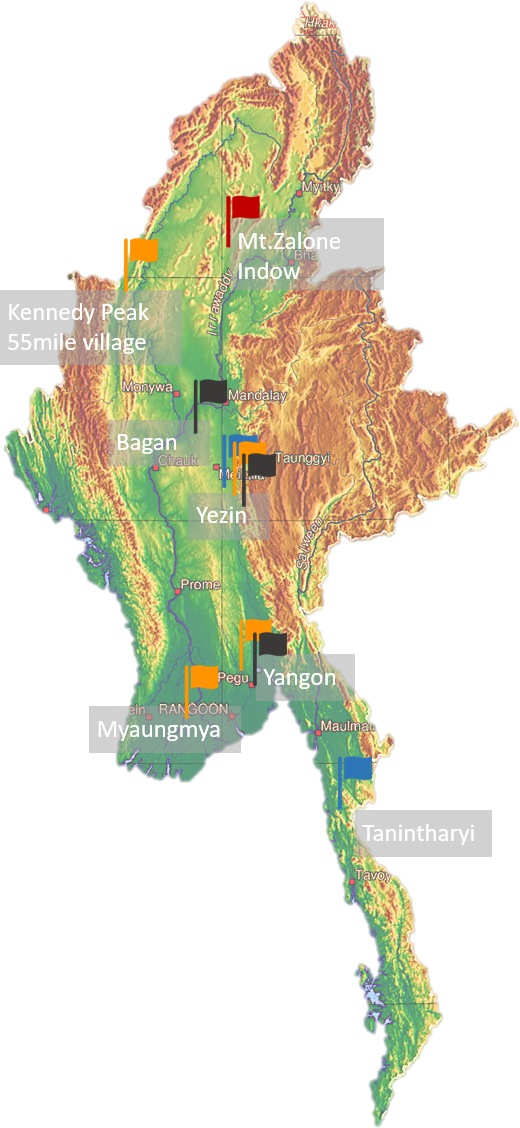
Number of surveys conducted
4times
Survey period & region
 2018 Feb [Bagan, Yezin, Yangon]
2018 Feb [Bagan, Yezin, Yangon] 2018 Dec [Mt.Zalone, Indow]
2018 Dec [Mt.Zalone, Indow] 2019 Nov [Kennedy Peak, 55mile village, Myaungmya, Yezin, Yangon ]
2019 Nov [Kennedy Peak, 55mile village, Myaungmya, Yezin, Yangon ] 2020 Feb [Tanintharyi, Yezin]
2020 Feb [Tanintharyi, Yezin]
No. individuals & species (migratory)
144 ind. of 52 sp. (25 ind of 10 sp)
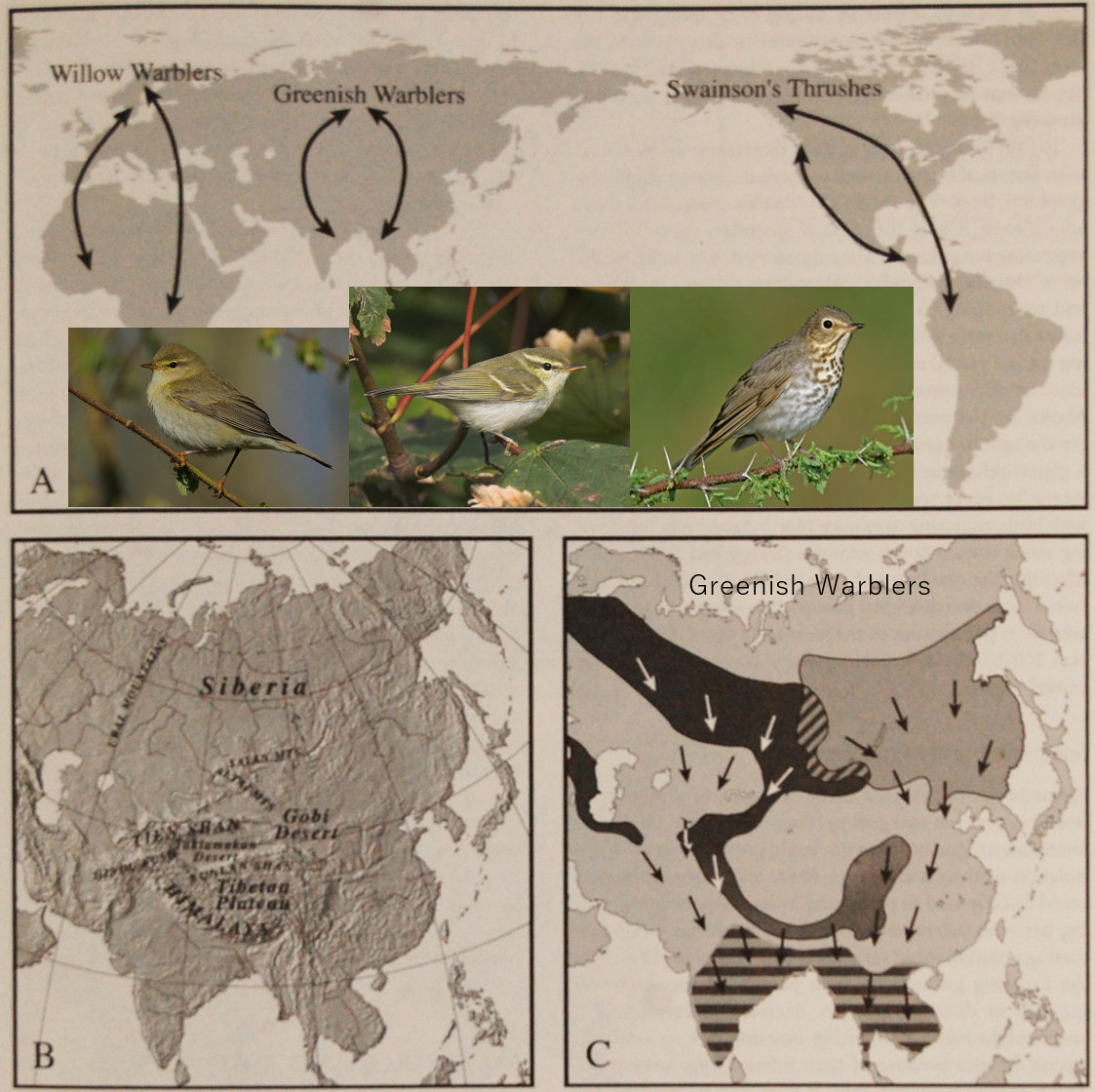
A) Migratory routs of three species with migratory divides, which avoid to migrate geographical barriers, such as deserts and ocean. B) Geographical barriers for migrant birds in Asia. C) Breeding range, migratory routes, and wintering range (horizontal gray stripes) of Greenish Warblers, Phylloscopus trochiloides.
Irwin & Irwin 2005; Siberian migratory divides: the role of seasonal migration. In Greenberg & Marra (eds) Birds of two world; the ecology and evolution of migration. Johns Hopkins Univ Press, London, pp. 27-40.
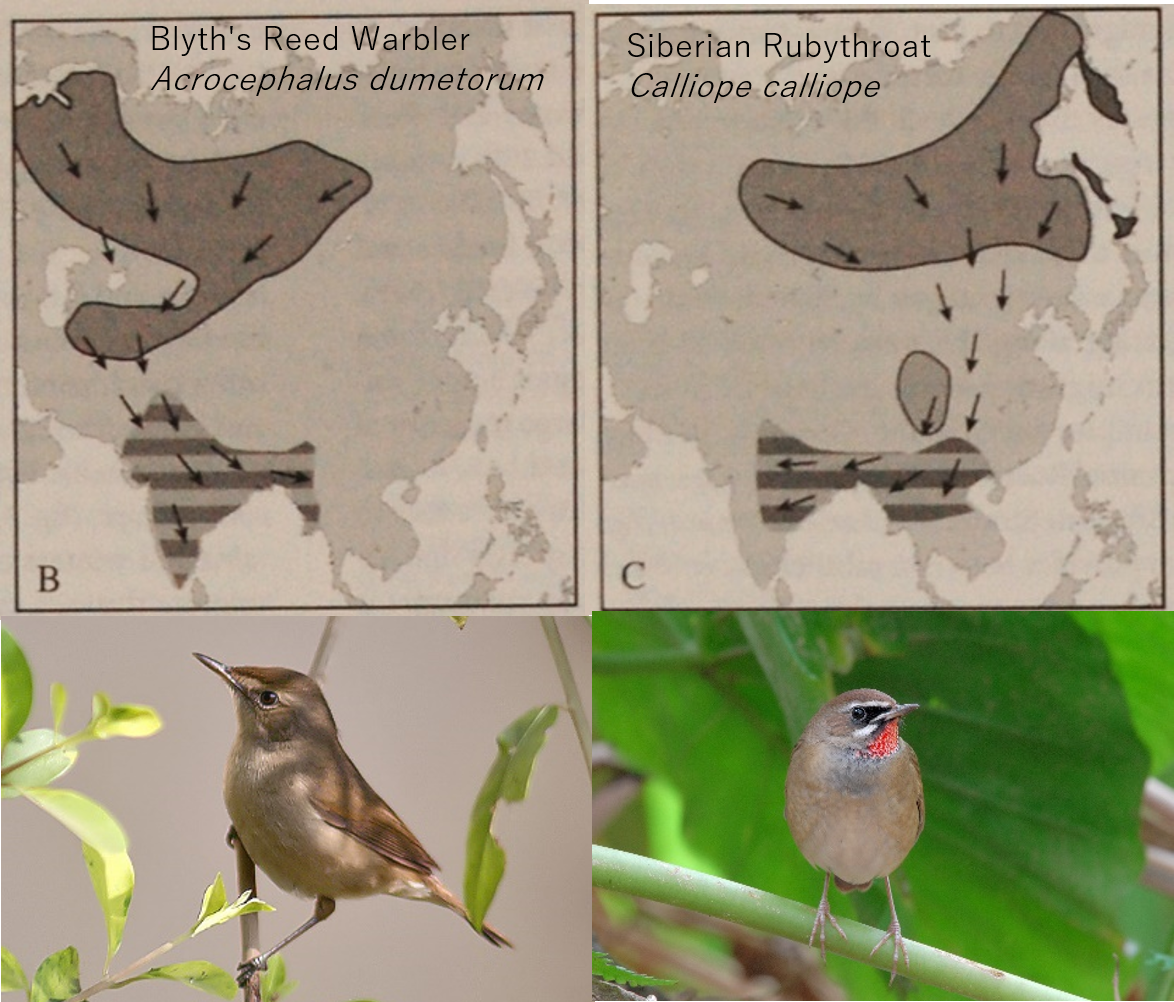
Two typical migratory routes of wintering birds in Myanmar.
Irwin & Irwin (2005)
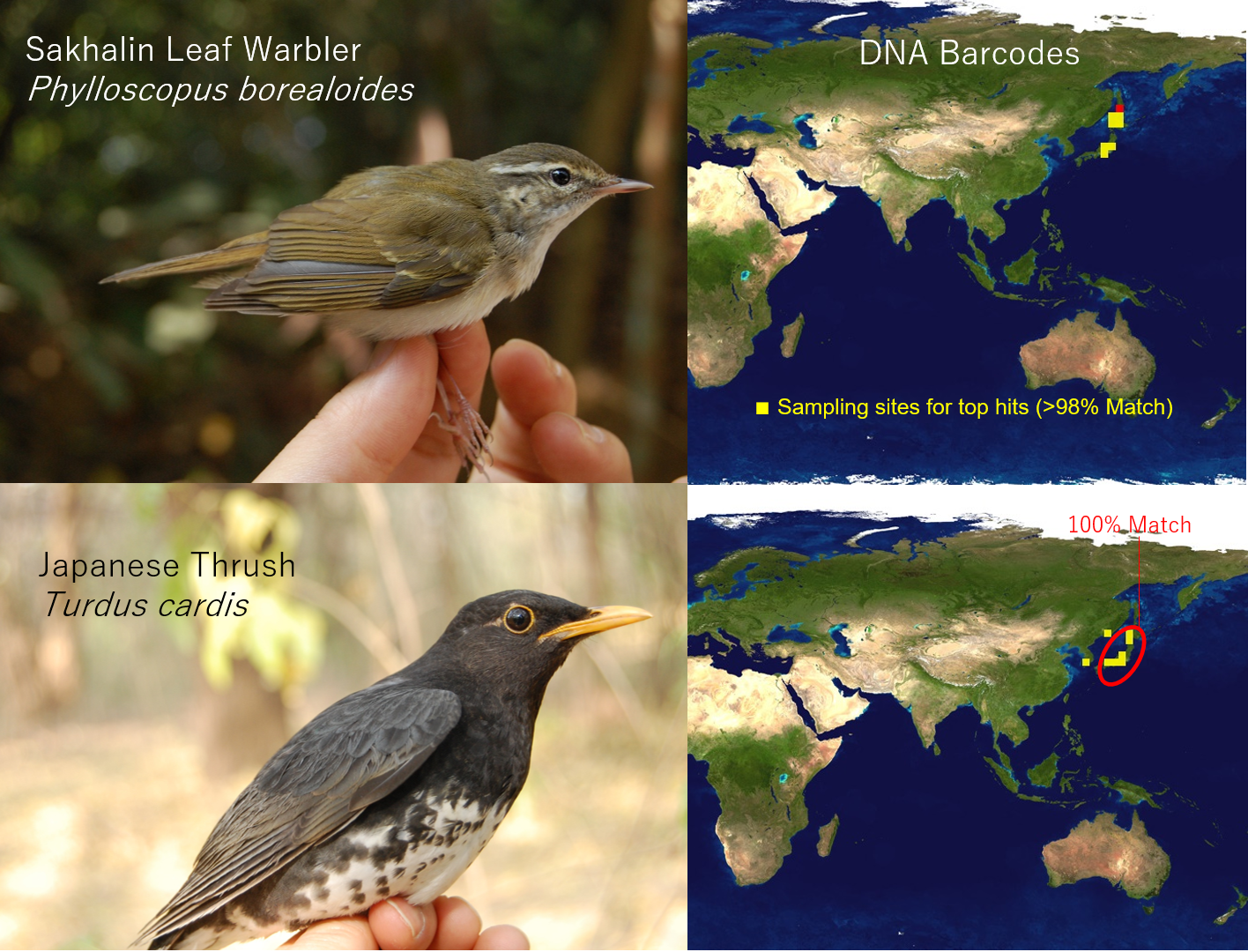
These two species were new records from Myanmar
The two species were completely identical to each of the Japanese population in DNA barcodes.
These revealed that some Japanese breeding migratory birds spend the winter in Myanmar.
Summary table; Breeding populations identified by DNA barcodes of Myanmar wintering birds
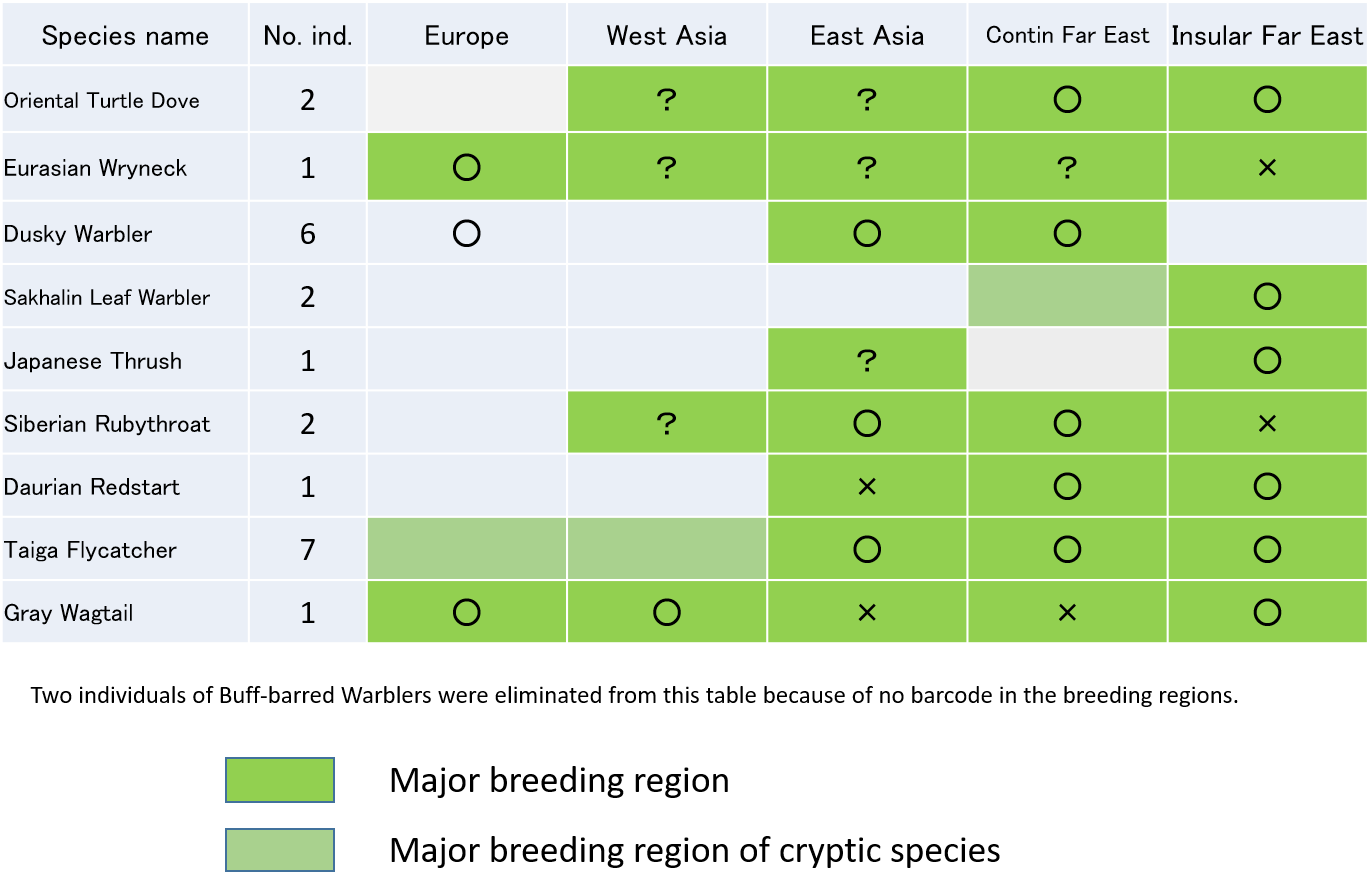
DNA barcodes revealed the breeding region where Myanmar wintering birds come from.
Myanmar wintering land birds have breeding range widely in North Palearctic, from North Europe to Japan.